
Reading time
6 min read
Optometry Practice Management: Tips and Real Cases
You’re a skilled optometrist, passionate about patient care. But are you prepared for the challenges of running your own practice? Successfully navigating the business side of optometry practice management demands more than just clinical expertise but also a deep understanding of business management principles. This transition involves constant decision-making, from choosing the right location and equipment to hiring and managing staff.
We’ve gathered information on ten optometry centers that managed to survive the competition and increase their revenue, as well as optometry practice management tips. The articles will guide you through major challenges that many optometry businesses face, such as the retention of specialists, competition with large chains and retailers, and marketing and sales, identifying growth opportunities.

How to improve optometry practice: start with the retention of employees
This problem is vital considering the huge lack of optometry specialists worldwide. According to WHO, 14 million optometrists are needed globally when there are only 331K available. There are several strategies that optometry businesses can use to retain optometrists.
- Delegating more examinations to technicians
Eric Rettig, OD, a partner with Mountain View Eye, a Vision Source practice in Pennsylvania, shares their optometry practice management optimization: assigning two technicians to each of its four doctors to delegate the examination process to the technicians. Tasks such as pupil testing, versions (EOMs), and dilation were incorporated into the pretesting protocols. Technicians were also authorized to perform additional testing based on patients’ past diagnoses or complaints. This approach ensured that the doctor had all pertinent data readily available upon entering the exam room, minimizing patient wait times and maximizing efficiency.
Owners have implemented the change to increase the number of patients seen per hour, but it has also given additional benefit: now doctors can spend more quality time with each patient.
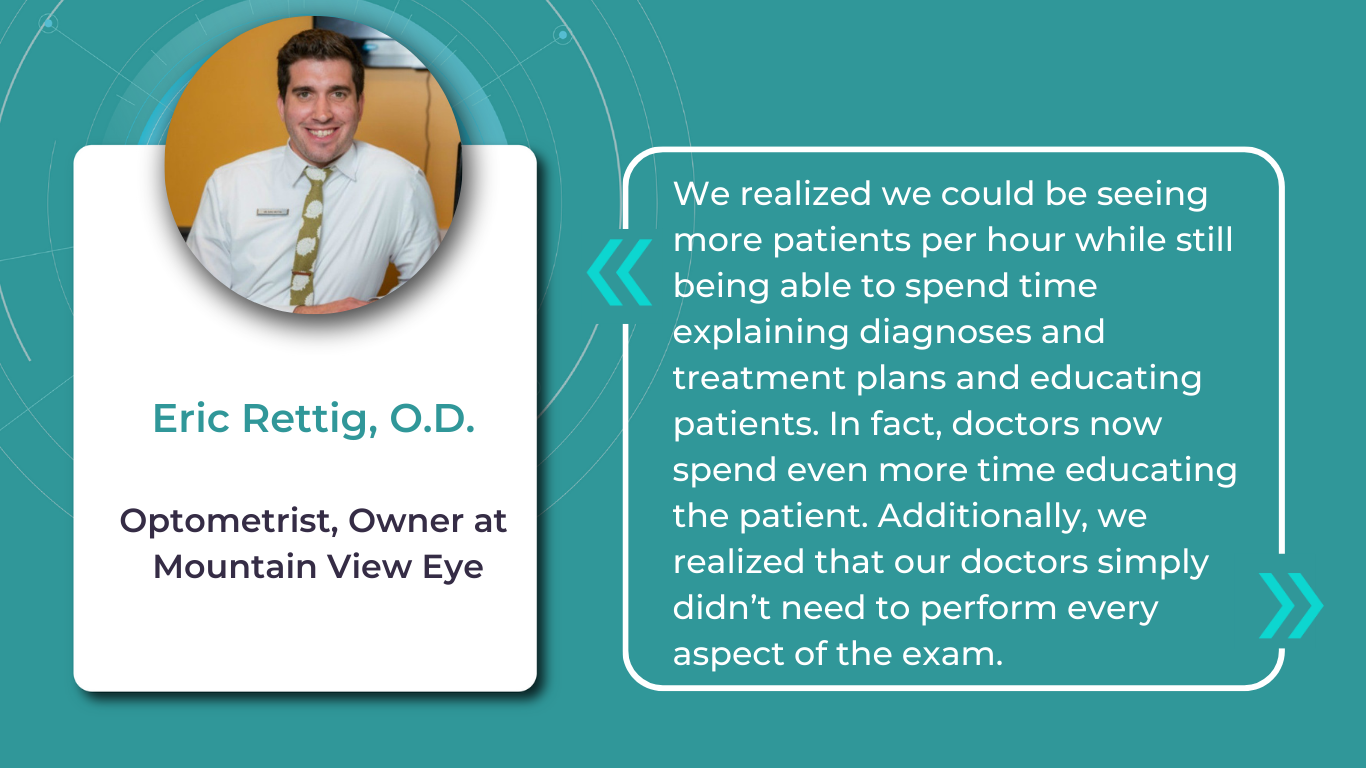
With an average revenue of $400 per patient and 6-7 patient care hours per day in a five-day week, this equated to $2,600 additional revenue per full-time doctor.
- Using Artificial Intelligence for retina scan analysis.
Many optometrists find OCT scan analysis challenging and are not confident about their interpretation skills. Using Artificial Intelligence for automated OCT scan analysis can make the work of optometrists more efficient, increasing the number of patients who undergo OCT examination and subsequently increasing revenue.
One such case is the practice of Dr. William C. Fruchtman’s Optometry, owned and operated by Dr. William C. Fruchtman, O.D., in New Jersey.
His practice offers comprehensive eye care services, including eye examinations, contact lenses, and glasses prescriptions. Dr. Fruchtman sought a tool to enhance both his optometry practice management and decision-making process in complex cases. His research led him to select Altris AI, an artificial intelligence platform for OCT scan analysis.

Implementing Altris AI has significantly increased Dr. Fruchtman’s confidence and precision in diagnosing and managing eye conditions. The platform has also provided his practice with a competitive advantage. Altris AI features a referral urgency score ranging from green (no need to refer) to red (urgent referral needed). This scoring system helps optometrists avoid both over-referral and under-referral of patients.
Thanks to the color-coded and labeled OCTs, optometry facilitates patient education and enables practitioners and patients to monitor the progression or treatment results more effectively.
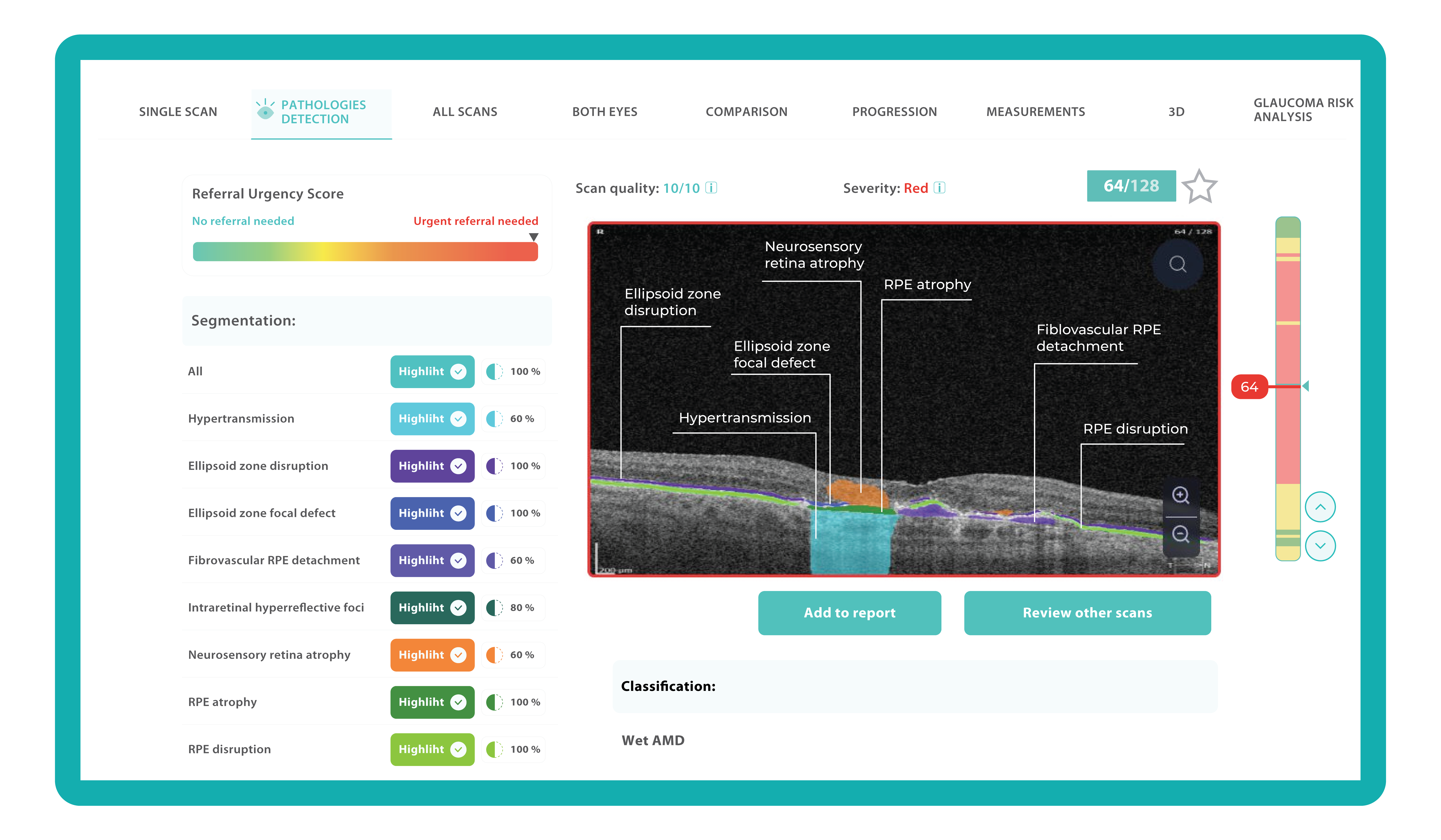
Optometrist Marketing: digital communication trends
- Concentrating on eyewear sales.
Jennifer Stewart, O.D., Optometrist and Founder at Look New Canaan, Connecticut, claims that 2 simple optometry practice management techniques can add $75,000 to the annual revenue of any optometry center. Even more intriguing is that it’s done without seeing additional patients.
One of these techniques is decreasing the sales of patients’ own frames (POF) glasses. Jennifer Stewart discusses the benefits available to the patient through their managed care plan, emphasizing that if lenses are cut for their own frame and the frame breaks, they will have already used their lens benefit.
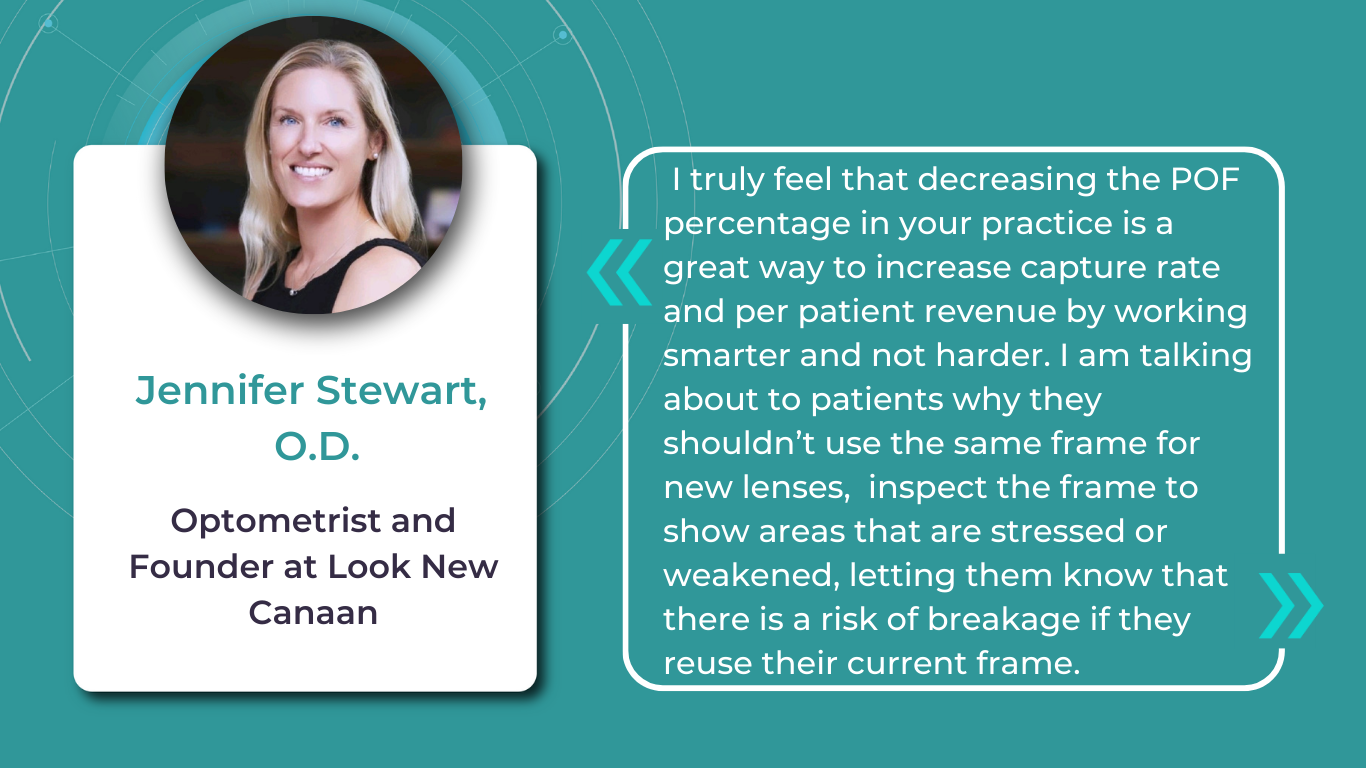
The optometrist explains how the patient’s current pair can serve as a backup and then escorts them to the optical area to meet with the optician. Before leaving the patient with the optician, the optometrist speaks privately with the optician, informing them of the patient’s desire to use their own frame and the discussion about the frame’s condition. The opticians have been trained to reiterate this message to the patient.
The second one is communicating the need for all types of lenses (for computers, reading, and sunglasses), which can be a very effective revenue-generation optometry practice management tip many owners neglect. The optometrist states that these few extra minutes to talk about options available to patients can result in multiple payoffs in optical. This is one of the optometry practice management tips that works for any center.
- Providing exquisite luxury experience.
Fabio Pineda, the owner of Eye Boutique in Houston, Texas, previously held a volume-based, medical-style practice with an average per-patient purchase of one frame per year, 5 percent sunglass sales, and an average per-patient revenue of $300-$350. In 2021, the optometrist changed his approach, opening a fashionable boutique-style practice. He shifted to a low-volume VIP clientele and a red-carpet approach with gourmet beverages, pastries, and a dedicated sunglass section with a wide selection.
This shift in eye care practice management has brought Dr. Pineda unique customers who specifically seek designer glasses and buy 5-9 pairs at a time, spending upwards of $4,000-$7,000 on purchases.

- Using social media and digital marketing tools extensively.
Your clients spend time on Instagram, Facebook, and Google, so these are the most effective digital marketing channels for communication with potential customers.
For instance, as an optometry marketing strategy to engage current and potential patients on social media, Dr. Arian Fartash, optometrist, CEO at GlamBaby, California, and blogger, considers three types of posts:
- interactive posts that pose questions about product preferences, like showcasing two frames and asking followers which they prefer, encourage audience participation;
- educational posts featuring interesting eye facts or eye-catching images related to eye health that offer informative content;
- patient-focused posts showcasing satisfied patients wearing new eyewear to humanize the practice and demonstrate the positive impact of its services.
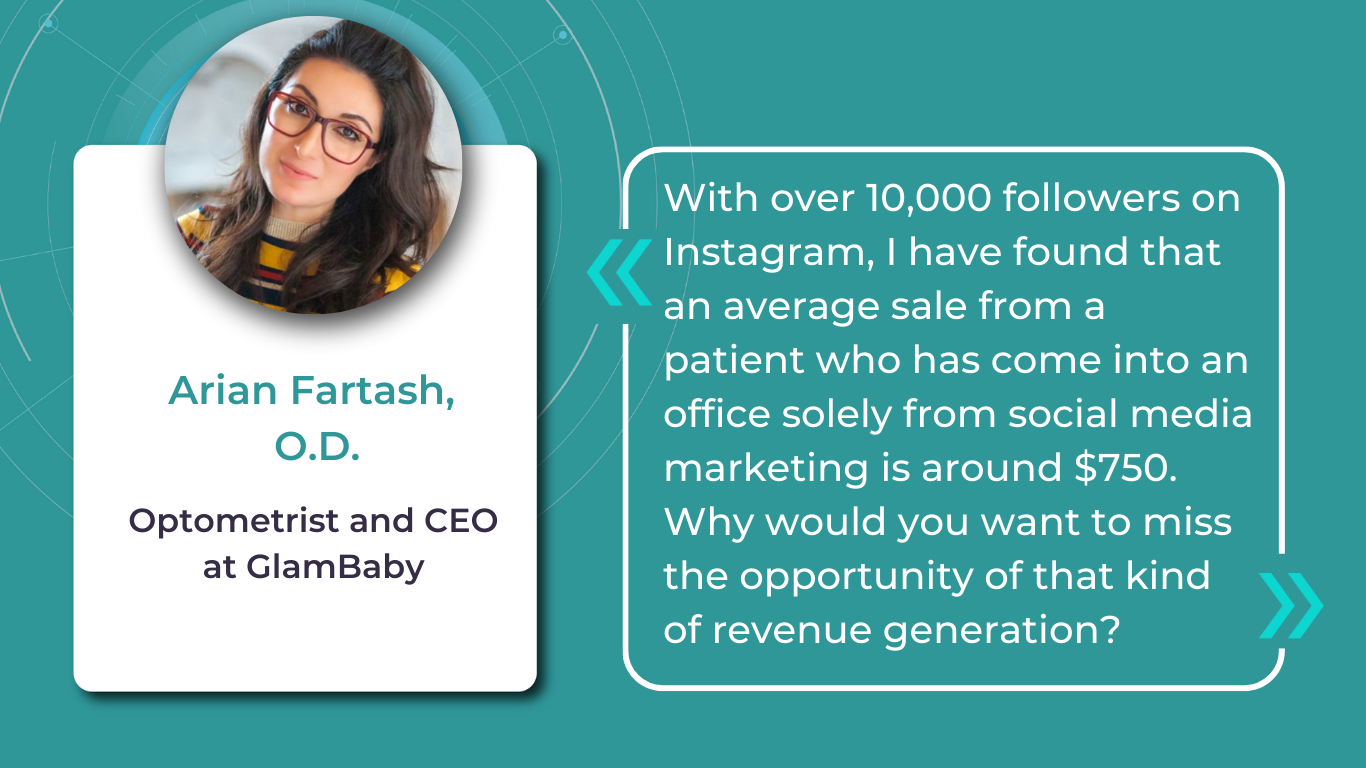
- Providing a small warranty on all products.
An optometrist and the owner of Brilliant Eyes Vision Center in Georgia, Janelle Davison, O.D., has implemented an extended warranty program for eyewear purchases to enhance patient confidence and increase revenue. For a $29.99 enrollment fee, patients receive significant discounts on replacement frames and lenses, paying only $50 for each, regardless of the original cost. This warranty, built into most eyewear packages, has proven popular with patients and generated an additional $14,000 in 2021. Dr. Davison has used the popular concept of buying technological equipment with a warranty, like smartphones or computers, that is familiar to customers.
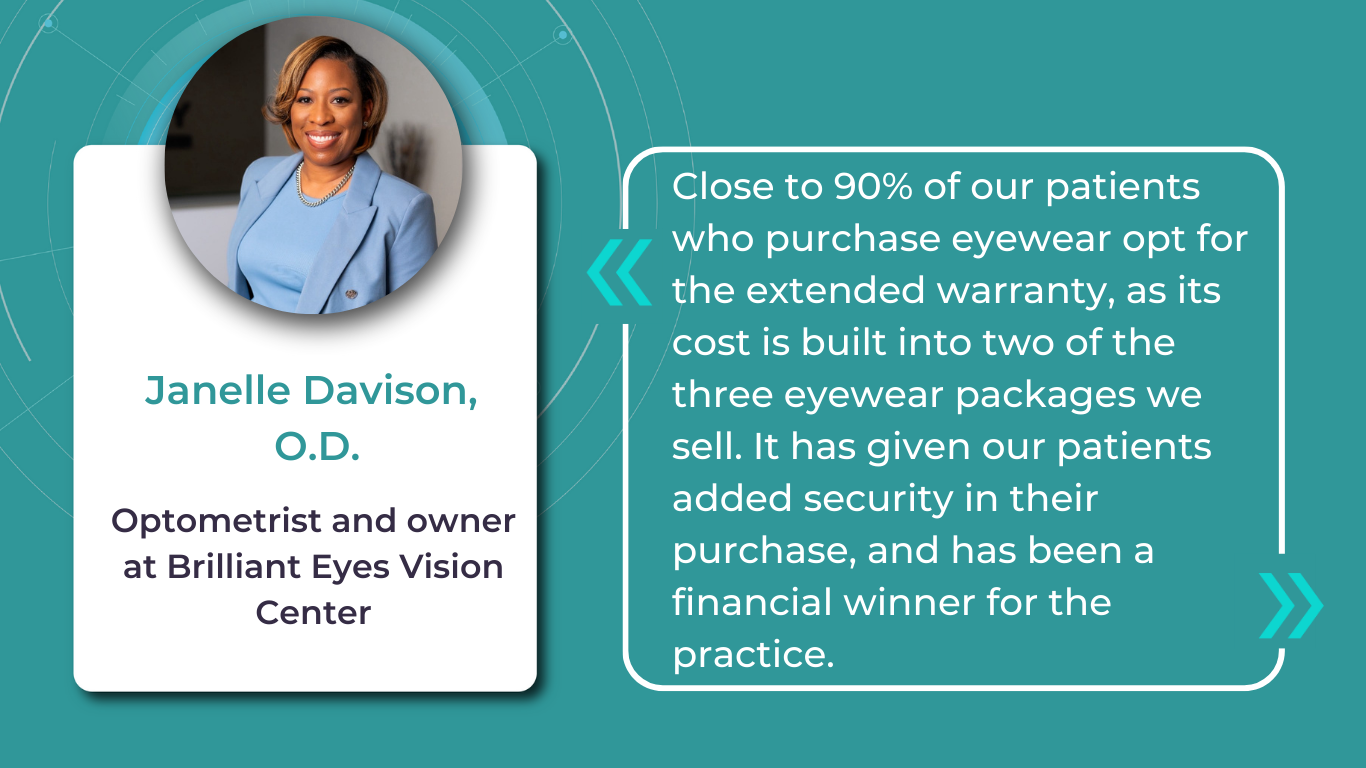
- Educating patients
According to Wolters Kluwer Health, patients crave educational materials from their providers, yet only two-thirds get them. This leaves patients searching for information, potentially exposing them to unreliable sources.
Knowing that providing clear, accessible patient education is crucial for understanding and treatment adherence, The Eye Place, optometry from Ohio, is utilizing the full power of AI for OCT analysis tool, Altris AI. Their winning optometry practice management strategy combines decision-making help from the platform and a way to enhance patient education.

Visual representations of patients’ conditions, facilitated by this technology, empower patients with a clearer understanding, leading to increased treatment compliance.
Eye Care Practice Management: competition with larger chains
Private offices find it hard to compete with chains like Specsavers in terms of prices or the speed of service. Chains often have better locations and can spend much more money on marketing. So, how to improve optometry practice to win this competition among corporations? There are several things that big companies don’t have:
- Offering personalized service and building a relationship with patients. Building a local presence is the key. Your optometrist center can be known and valued if you really care about the community, know each of your clients personally, and understand their pains and needs. More than that, 97% of marketers witnessed a rise in business outcomes as a result of personalization, according to Salesforce.
- Providing unique, high-quality products unavailable at chain stores is also a worthy opportunity for a small but flexible business. For instance, some optometry centers build their presence relying on rare glasses brands with sophisticated designs. The global therapeutic contact lenses market is expected to grow at a CAGR of 4.90% from 2021-2027, and designer brands will play a crucial role in this growth.
- Providing exceptional customer service and after-care. Communication with customers is the core of relationships in any sphere, and healthcare is no exception.
Today it’s easier to communicate with customers using social media, messengers, and telemedicine. This is the one of optometry management tips that not only allows optometry centers to take care of their clients not only during visits but afterward as well are much more profitable.

- Storing all the patients’ data effectively and securely is the key to fast and reliable services inside the optometry centers. There are various EHR systems for optometry centers, and finding the best optometry practice software is hard. However, it is always wise to rely on testimonials. Here, you can find another portion of optometry practice management tips that focus solely on the best optometric practice management software with Acuitas activEHR 2.0, MedFlow EHR, Liquid EHR, EyePegasusEHR, Eye Cloud Pro, OD Link, ManagementPlus, Medesk named the best optometric practice management software according to our research and reviews.
PATIENTS’ NO SHOWS
A patient no-show is a painful problem for the majority of optometry centers. Patients ignore yearly checkups and forget about follow-up visits whenever they feel better.
Virtual check-ins increased profitability and reduced the cost of goods sold (COGS) for the partner at Wichita Optometry. Dr. Chad Fleming adopted this optometry practice management approach through the efficient check-in process he observed at Walmart. His practice faced the challenge of managing a high volume of phone calls and text messages, requiring either additional staff hiring without an immediate increase in revenue or a strategic reallocation of existing personnel.
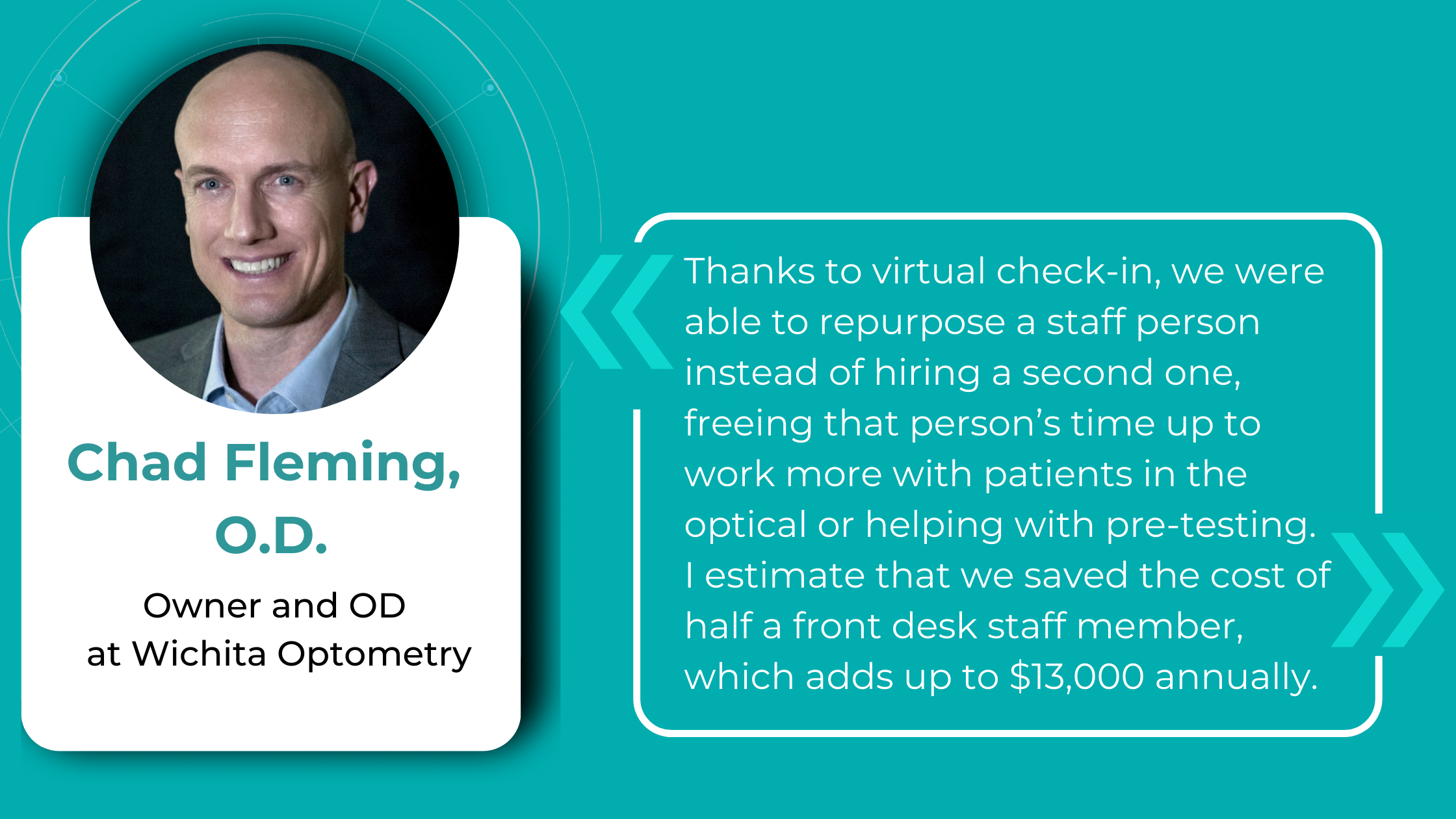
Using software to remind about future visits can be the solution. For instance, Weave software helped Serenity i Care optometry to reduce the number of no-shows up to 30% from 75%. This software automatically informs clients about future visits via e-mails and texts.
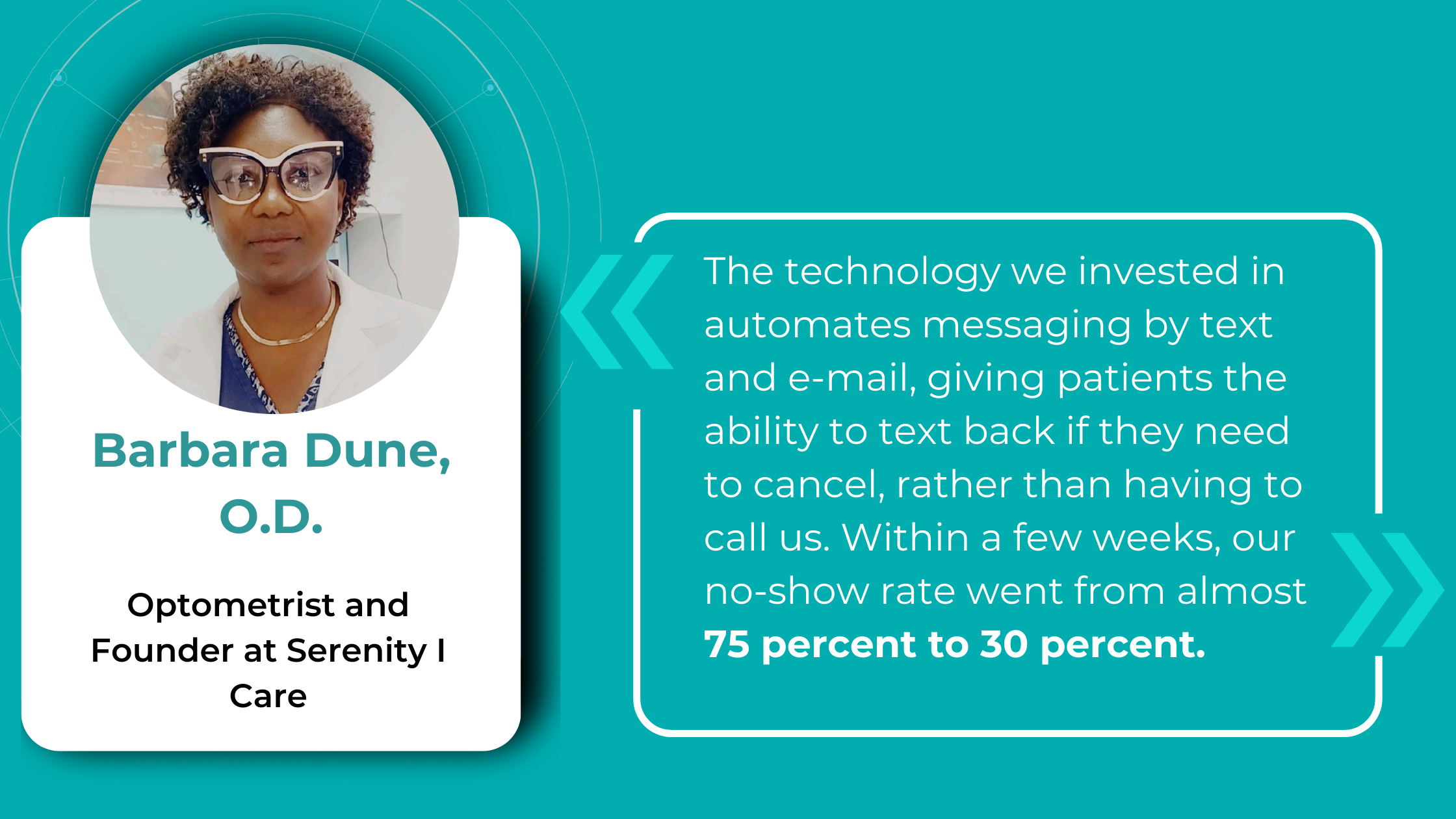
There is no need for a team to have endless calls that are not responded to. Demandforce, Solutionreach, and Simplifeye are other solutions that might work, and they can be great software for reminding patients about visits. This is the most well-recommended optometry practice management software to deal with forgetfulness.
By using these optometry management practice tips and continuously seeking ways to improve patient engagement, streamline operations, and increase efficiency, optometry can increase its revenue and sustain long-term success.

